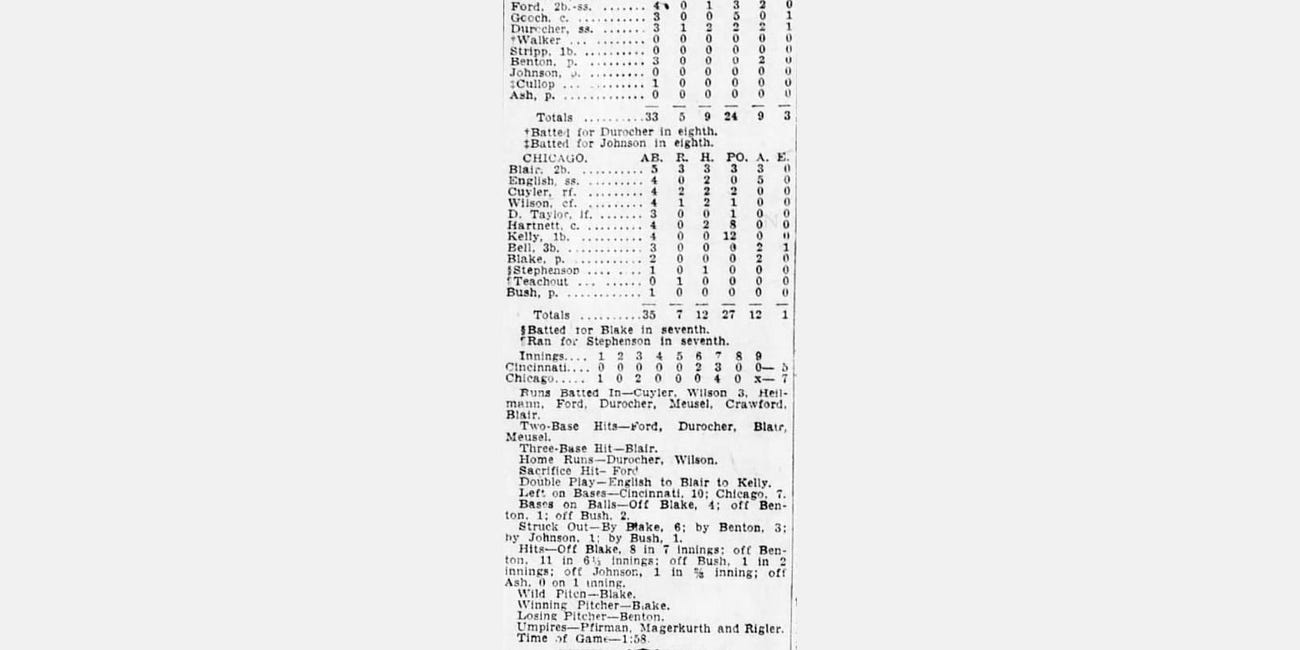Statistical Availability
There’s an interesting ongoing discussion about Strat-O-Matic over on the Delphi forums. One of the local gamers is working on deconstructing Strat-O-Matic’s original 1968 season.
The reason why this is interesting, of course, is because there were certain statistics that Hal Richman likely did not have access to. And you can see it when you take stuff apart.
Let me back up a little bit first, though. This is actually something that we’ve talked about before on this blog.
If you’ve been around here for a little while, you might remember this post, for example:
There are a few very interesting things that we discovered when we started looking through old boxscores.
Boxscores did not include walks by batter.
Boxscores did not include strikeouts by batter.
Boxscores did not include times caught stealing.
Boxscores did not include the number of times each batter hit into a double play.
Boxscores did not include the number of innings a player played for each position.
Boxscores did not include the number of extra base hits given up by each pitcher.
This was consistent for decades.
And don’t kid yourself into thinking that local newspapers reported some of these statistics. From what I’ve seen, all sources used the same boxscore as far back as the 19th century. While it’s certainly possible (and likely true) that local newspapers may have had more accurate numbers because of transcription errors and the like, local papers simply did not report things outside the boxscore.
In fact, one reason Retrosheet exists is to reconstruct games from original game accounts that were printed in certain old newspapers. This is because those old boxscores — and even game accounts — would leave out so many details that are interesting to researchers.
We can see the impact of those old boxscores in some of the baseball sims that were created decades ago.
For example, it’s clear that Clifford Van Beek didn’t have access to any strikeout or walk data for hitters for the 1930 season. It would have been impossible for him to create this information from boxscores, since the boxscore didn’t break any of that down by hitter. We also know that Van Beek published his game before either one of the 1931 baseball guides were published.
The reason why APBA baseball never developed a caught stealing system is because caught stealing statistics were simply not reported. This is actually due to a statistical oddity. For example, the 1951 Sporting News Guide lists American League caught stealing data by player:
However, that data was not available for the National League players:
Grounded into double play statistics by batter were first kept in the National League in 1933, and spread to the American League in 1939. Outside of what limited information we can piece together through Retrosheet and through careful examination of game stories, there’s really nothing more we can do.
And then we come to the killer: extra base hits allowed by pitcher.
When he started making cards for all teams in 1963 (for the 1962 season), Hal Richman could figure out how many home runs each pitcher gave up but not how many doubles and triples they gave up. And that’s a problem.
This is the sort of data he likely would have worked with:

The working theory as of this writing seems to be that Richman made an educated guess about the number of doubles and triples each pitcher gave up. He might have assumed that those pitchers gave up doubles and triples in a proportion to the league average similar to home runs.
The research isn’t entirely finished yet. However, it gives us a good idea of the sort of thing it would have taken to create a game like Strat-O-Matic. And it also might give us some insight into why J. Richard Seitz elected to keep his APBA pitching system relatively simple, even after creating the Master Game.







For years, the platoon ratings in the APBA MG were based exactly on that - how often the players were platooned. They didn't start using actual lefty/righty splits until much later